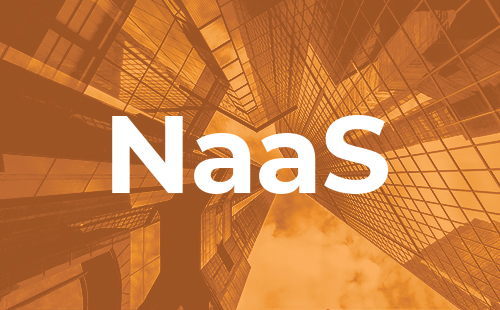Welcome to RUCKUS Networks, part of CommScope's world-leading portfolio of networking solutions. Learn more.
Hello from Prague where we are hosting our European partners at the first Big Dogs event since the pandemic. A lot has changed in networking since 2020. And at this Big Dogs event we are sharing with our Partners some of the directions RUCKUS is taking to stay at the forefront.
Enterprises move to As-A-Service mindset
For me, the biggest recent change we have seen in Tech. has been the massive growth in Cloud Computing. Today over 90% of enterprises run workloads in the cloud and about a third of enterprises run more than 75% of workloads there*. In addition, all the major cloud providers have started to offer on-premise “outposts’ or ‘edges’ of their cloud services. The on-premises cloud-servers are owned and operated by the cloud provider and charged to the enterprise customer as a subscription.
Tied up with this massive growth in cloud computing has been a sea change in mindset of enterprise buyers. Enterprises have moved from wanting to select, purchase and operate technology assets to recognizing that their true value is focusing on delivering specific business capabilities and all they need from technology is the services those assets deliver.
All the rest — the rigid annual capital budgeting, the RFQ process which everyone dislikes and which always takes 6 months longer than planned, the staff consumed 24/7 in operating equipment and solving problems, and finally the refresh cycle – are so much wasted effort. Fully 65%** of enterprises (in a recent IBM study) think they gain in speed, 62%* in agility and 47%* in overall economics by skipping the complexity and buying services directly.
Dawn of Network As A Service (NaaS)
This mind-set change, driven by enterprise’ experience with cloud computing, now looks set to be one of the hottest trends in networking. Network As a Service, which started from a small base in 2022, is now forecast by the major market research and industry analyst firms as one of the hottest and fastest growing trends through the end of this decade.
A recent report from 650 Group forecast that almost 40% of Wi-Fi Access Points delivered in 2027 would be under an ‘As A Service’ contract. This would be an almost unbelievable change had we not all been able to see what happened in the cloud computing market.
So it’s time to get serious about NaaS. But what is it exactly? And given we are at the ‘crossing-the chasm’ phase of this market, what applications are going to drive purchases over the next couple of years.
Enterprise Network As A Service Defined
First, let’s say what we are not talking about in this blog post. There is a form of Network As A Service which is actually a form of cloud computing. When a customer sets up a couple of server instances at AWS or Azure, they might also instantiate another server instance as a load balancer and another as a firewall. This cloud resident form of NaaS is not what we are going to be discussing in this blog post.
Rather we are talking about network equipment (APs, switches. Firewalls etc) placed in customer locations to support onsite networking of computers, people and machines (this might of course be managed from the cloud). We call this Enterprise Network As A Service to distinguish it from the cloud form.
In most analysts’ view, to be a 100% Enterprise Network As A Service contract,
- the customer contracts for network services (i.e. the ‘outcomes’ in the jargon)
- the vendor or integrator provides all the hardware and software required to deliver the services
- the vendor or integrator also provides all the life cycle services – design, installation, monitoring and management, and break/fix – to put the network into service and keep it operating at the required level
- the customer pays for the network services in the form of a regular subscription (subject to an SLA)
Crossing the Chasm to Network As A Service
However, in the initial phases of the transition to NaaS, there are a number of drivers which may cause an Enterprise to adopt NaaS, short of their immediately moving to the full NaaS model described above. For example:
- Some enterprises will not have operations staff expert in a new form of networking technology, needed for a new application or security requirement. An example could be a requirement for 5G coverage to support Industry 4.0. Accordingly, the buyer will primarily seek to adopt NaaS for the new requirement, so they can deploy a new technology quickly and cost effectively.
- Some enterprises might want to focus their IT staff on driving business transformation and seek to outsource day-to-day network operations of the network they currently operate.
In the examples above the buyer might have plenty of access to capital. However, there will be many buyers for whom gaining access to capital is difficult or time consuming. In this case, the buyer might not need the operational aspects of NaaS but wants to take advantage of NaaS to allow them to convert what would have been an upfront capital investment into a series of subscription payments.
And finally, NaaS could be attractive to buyers who have adequate access to capital and operational staff, but simply want to be able to move faster than the traditional model allows. This has been a powerful driver of cloud computing, and will likely be a driver for NaaS also.
RUCKUS NaaS
In PART TWO of this post, I will describe the Network As A Service program we just announced at Big Dogs in Prague.














